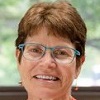Introduction
How does physical activity and movement promote learning in other developmental domains: Social, Emotional, Cognitive, Language, and Approaches to Learning?
Sensory Activities
What new ideas would you like to try?
www.geneseeisd.org/DocumentCenter/View/4144
Movement
Watch for examples in a Toddler room
Motion Moments video Published on June 14, 2012 by NRCKids. The health problems associated with obesity not only impact adults but children as well. As an educator you can and may be uniquely qualified to help children develop healthy eating, age-appropriate physical activity and limited screen time viewing habits to help them avoid childhood obesity. The Motion Moments videos will show you simple ways to weave physical activity into your an early care and education program.
Babies on the Move, Young Children, 48-50; you will explore how movement promotes brain development and specific activities to provide for infants.
Sensori-Motor Development
- Babbling is connected to language development
- Grasping objects, dumping and picking up is connected to cognitive development
- Smiling and eye contact is connected to social development
- Turning of the head toward familiar adult voices is connected to emotional development
- Comprehensive health care (immunizations, well-baby checkups and screenings)
- Safe and healthy environments (pesticide-free, safe homes and neighborhoods,lead-free spaces, safe and adequate water and air quality)
- Healthy nutrition and food choices
- Healthy movement (to prevent childhood obesity)
What community resources address these needs? How will you inform families of the community resources available?
Teaching Tips
infants are to:
- Develop ability to move the large muscles (gross motor).
- Develop ability to control and refine small muscles (fine motor).
- Develop sensorimotor skills where children use their senses – sight, hearing, smell, taste and touch – to guide and integrate their interactions.
- Develop skills that will develop into healthy practices for life.
- Gain control over their movements as they reach out, grasp and release objects.
toddlers are to:
- Develop ability to move the large muscles (gross motor).
- Develop ability to control and refine small muscles (fine motor).
- Develop sensorimotor skills
- Develop skills that will develop into healthy practices for life.
- Pretend play tools (digging tools, small brooms)
- Child-sized musical instruments
- Pedal and non-pedaled riding and push toys
- Large, soft balls and toys
- Large blocks
- Objects to safely climb up, jump down, and crawl through
- Have two or more of each item because toddlers take what they want!
- Crawl over large cushions.
- Crawl through tunnels made of sheets or large cardboard boxes.
- Step into and out of a hula hoop laid flat on the ground.
- Walk over squares of different surfaces such as grass, carpet squares, sand, and pea gravel.
Using Toys to Support Infant-Toddler Learning and Development. Young Children, 50-56.
How will your schedule, floor plan, and weekly plan enhance physical health and wellbeing? How did you consider oral health? Remember that in 2010, Massachusetts childcare regulation began to require teeth brushing as was discussed in Chapter 5.
Read and Participate
| Connections |
Extensions |
Curiosities |
| Relate ideas from the reading to learning in other courses or life experience. |
How did ideas from the activity extend your thinking? What might you try in your classroom or future classroom? |
What are you curious about? What do you want to explore further? Why? |
| |
|
|


